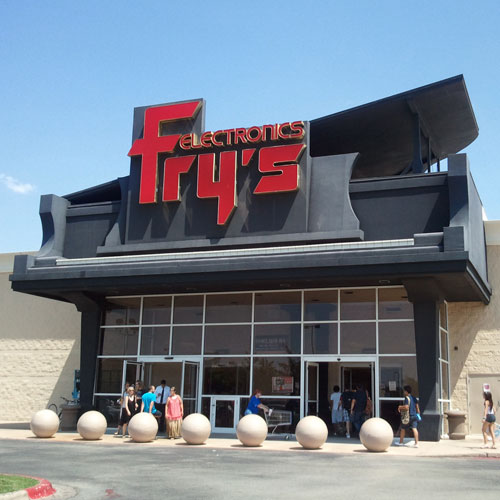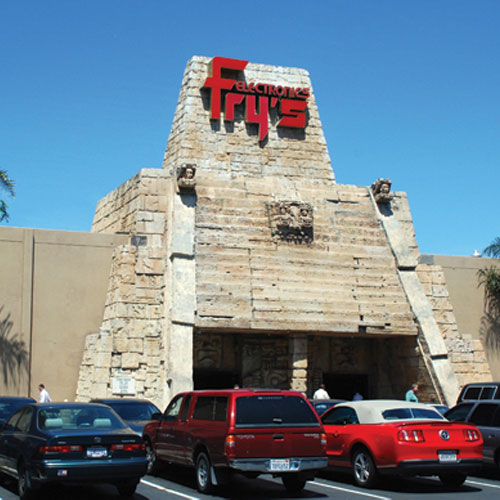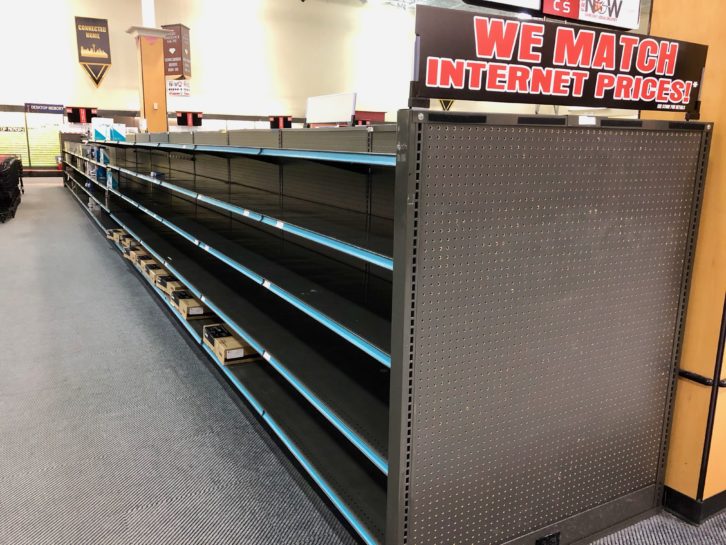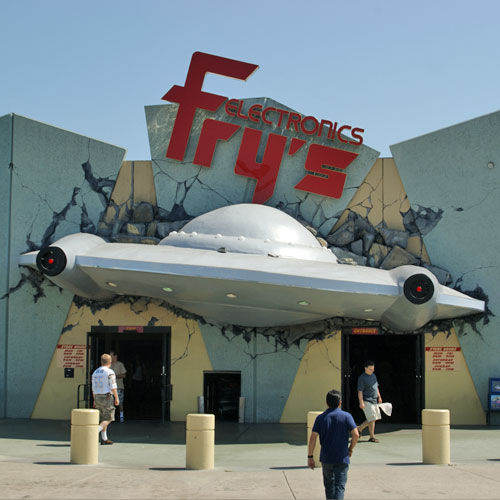
At first glance, Fry’s seemingly sudden and surprise closure earlier this week appears to be a case of another brick & mortar retail falling victim to the combination of the COVID-19 pandemic and increased e-commerce competition.
“Electronics and appliance stores went down substantially in 2020 and [Fry’s] were no doubt a casualty,” noted Forrester analyst Sucharita Kodali. “There were rumors of challenges for years, which suggests that it may have had a cash crunch for a while. Any company going into the pandemic with a cash crunch was only going to do worse when cash was even more crucial. It’s unfortunate because it was for many an institution, but it appears to be another casualty of the pandemic and a further push of sales to e-commerce.”
While retailers have certainly suffered in the last year, most national and regional consumer technology chains have adjusted to changed conditions and maintained relatively healthy sales.
Fry’s demise, however, was neither sudden nor a surprise. Challenges presented by the pandemic and online sellers merely sped up a deterioration process that had actually been years in the making, primarily the result of how Fry’s conducted – or failed to conduct – its business.
“They’re a victim of not keeping up with the times, they couldn’t evolve,” opines Robert Heiblim, president of Blue Salve Consulting. “In our industry, it’s the one constant: it’s always changing. The tech is changing, the models are changing, the people are changing, the brands are changing. You have to change with it.” Or, as one industry veteran noted: “So much of their business practice came back and smacked them in the face.”
Unusual Origins
Unlike most family boot-strapped retail startup origins, Fry’s was born with silver spoon. Charles Fry sold his eponymous supermarket for $14 million in 1972. With a chunk of the proceeds, his three sons, John, Randy, and David, opened the first Fry’s Electronics, a 20,000-square foot store, in Sunnyvale, CA, in mid-1985.
While none of the sons wanted to be grocers, they overlayed many of a supermarket’s operational, merchandising, and promotional principals onto the selling of consumer electronics and computer gear. Fry’s stores were enormous, ranging between 50,000 and 180,000 square feet, essentially supermarkets for tech geeks, promising “a one-stop-shopping environment for the high-tech professional.”

Stores were stuffed with every conceivable tech device, part, and accessory. Shoppers literally filled shopping carts with both what they had intended to purchase as well as impulse purchases from both store shelves and at the POS, where shoppers would find a wide variety of mainstream and personal computer magazines, how-to tech books, t-shirts, batteries, and even grocery items that appealed to DIY tech geeks, such as snacks and sodas. Fry’s also specialized in eccentric and entertaining merchandising and imaginative store décor themes, such as 1950s sci-fi movies, Aztec, or Alice In Wonderland.
Former Apple executive Jean-Louis Gassée described Fry’s in its heyday as “a truly aboriginal techie bazaar where geeks could find everything they needed to live in autarky, from logic boards to voltmeters, dried noodles to ‘nice’ clothes for a job interview, magazines, energy bars, mini-fridges… Going to a Fry’s store [was] entertainment in itself; for a geek, it could be recuperative.”
As a result, Fry’s quickly and successfully spread. At its peak, there were 34 Fry’s superstores in nine states, employing around 14,000 people, and generating $2-2.5 billion in annual revenue.
Self-Inflicted Wounds
 However, just as tech changes, so did customer needs and tech retailing. Most brick & mortar retailers adopted, creating their own e-commerce arms, expanding customer service, investing in inventory control systems, and most of all, maintaining solid financial relationships with its major vendors.
However, just as tech changes, so did customer needs and tech retailing. Most brick & mortar retailers adopted, creating their own e-commerce arms, expanding customer service, investing in inventory control systems, and most of all, maintaining solid financial relationships with its major vendors.
Fry’s reportedly did none of these things either well or at all and, over time, the collective impact of its inaction became corrosive. In the last few years, occasional reports from forlorn Fry’s fans on social media highlighted increasingly disappointing empty shelves.
Industry insiders, however, knew Fry’s wounds were more-or-less self-inflicted. Aside from widely-reported criminal, civil, and regulatory problems over the years, Fry’s was late with an e-commerce operation, failed to modernize its inventory control, fiercely fought accepting returns or issuing refunds, and, perhaps the worst sin of all, they were slow to pay their invoices – if they paid at all.
“They created a lot of bad blood with vendors,” one industry veteran asserted. “They couldn’t get shipments because they were in a battle with [vendor] credit managers. Many big vendors just wouldn’t put up with it.” As a result of its lackadaisical approach to paying invoices, major brands simply stopped selling to Fry’s.
“Even in their heyday, [Fry’s] were always a challenge for vendors – and the consumer, frankly – to work with,” reports Stephen Baker, VP industry analysis for the NPD Group. “For consumers, the stories of refusals to take returns, and surly salespeople are legendary. But they always managed to assuage the consumer with a massive inventory, enormous SKU depth and great pricing.

“For the vendors, the challenges of managing Fry’s as an account were always offset by the immense volumes and sales results they posted,” Baker continued. “Once those results started to slip, the difficulties become much harder to overlook for the vendors. And the change in the market, a switch towards online transactions, especially for the lower volume, more specialty products and components, undercut their bread-and-butter product lines and eroded their volumes. The decline in PC pricing as mass market retailers moved in, their inability to adjust to a broader definition of consumer electronics that included the home theater and TV markets, and their inability/refusal to invest more in online ultimately led to their end.”
While major consumer technology and computer vendors found it necessary to avoid doing business with Fry’s, one industry veteran believes “they’ll probably pay their secured vendors and make a deal with the unsecured vendors.” Aside from remaining vendor financial issues, the eccentric retailer’s passing has resulted in a regretful nostalgia.
“This has seemed inevitable for a while now,” one former Fry’s supplier executive wistfully observed. “While once a strong regional presence, they have been less relevant in recent years, so probably will not have a major impact on the business by their final closing. That said, I’m always sad to see a strong regional player like Fry’s close. For me, showrooms like Fry’s were great places to introduce new technology which needs to be demonstrated and experienced by the consumer in order to get the full effect. They were always very good at creating experience rooms and impactful demos.”
See also: Best Buy Lays Off 5,000 Employees, More Stores To Close In 2021












